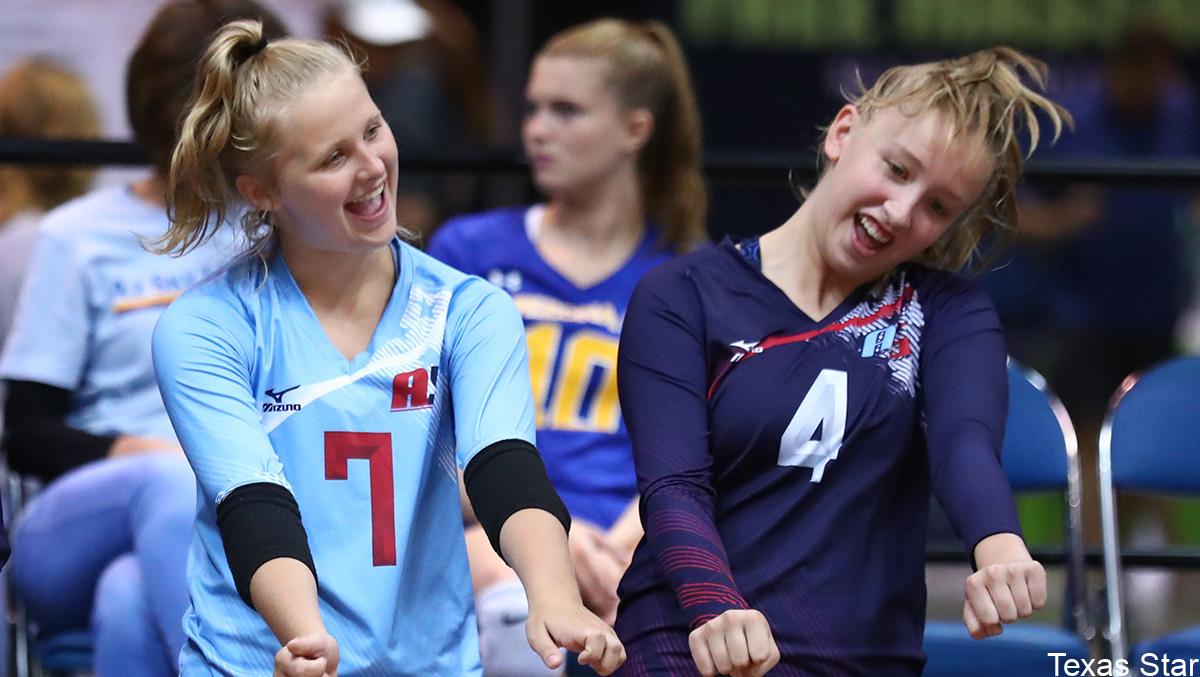
My Favorite Player
After 30-plus years of coaching in this great sport, I think it is time to tell you who my favorite player is. Every coach has one, you see, and I am no different.
Resources for
Follow USAVolleyball
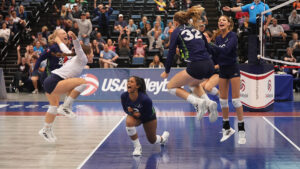 USA Volleyball Education is focused on improving developmental and educational opportunities across the sport of volleyball from grassroots to the national team level. Our goal is to provide the opportunity to access, complete and apply high-quality information and methods in the technical, tactical, physical and emotional aspects of the game for athletes and coaches while providing training, support and resources for other key stakeholders including officials, parents and clubs.
USA Volleyball Education is focused on improving developmental and educational opportunities across the sport of volleyball from grassroots to the national team level. Our goal is to provide the opportunity to access, complete and apply high-quality information and methods in the technical, tactical, physical and emotional aspects of the game for athletes and coaches while providing training, support and resources for other key stakeholders including officials, parents and clubs.
For years, the focus of volleyball in many areas and across various levels shifted to a mindset of winning at all costs.
What we now know is that the most successful teams in the world have developed a model of training and a culture that supports a holistic approach to athlete development which not only sets them up for competitive success on the court, but values and emphasizes the important of athlete health, well-being and long-term involvement in the sport.
The USA Volleyball Development Model was created based on the idea that volleyball in the U.S. could be taught differently, resulting in long-lasting positive outcomes across all measures of performance while keeping kids involved and loving the game longer.
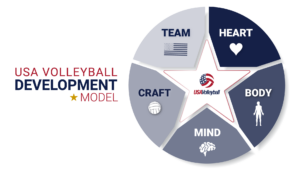
The five pillars of the USA Volleyball Development model provide the basis for a holistic approach to the core elements that are vital to supporting development at every level and across age groups.
USA Volleyball Education is committed to providing support for the volleyball community with a role-based approach to education and training. Whether you’re planning practices, cheering from the stands or making the right call, we provide the tools and resources to help you succeed.
USA Volleyball partner Sports Imports has provided USA Volleyball coaches with drills for use with their Trainer+ and The Vertec.


After 30-plus years of coaching in this great sport, I think it is time to tell you who my favorite player is. Every coach has one, you see, and I am no different.
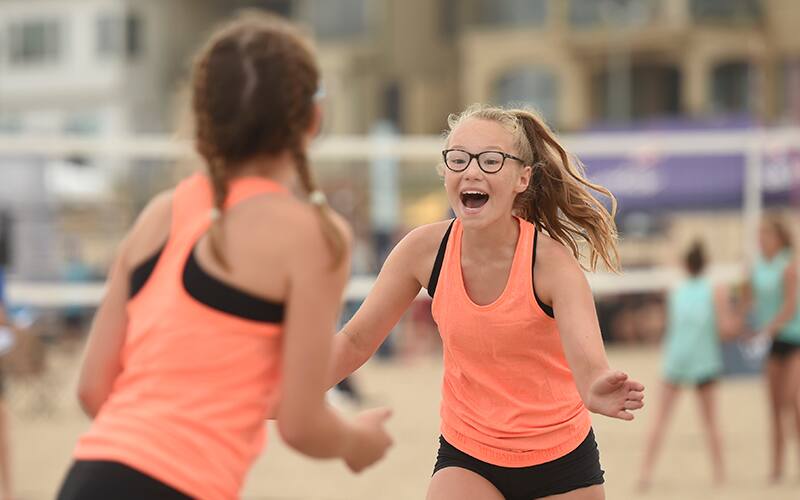
IMPACT training provides a long list scrimmage scoring options. Some coaches mistakenly read this as “all you do is play games” with supposedly no focus on technical skills. The assumption is, since it is not a coach controlled training environment, it must not be technical.

You spend most of your time active. Wouldn’t you rather play a sport where you get to sit around most of the time like baseball, cricket or wrestling? While you get to rest a bit between points, volleyball makes all 12 people on the court move all over the place and that is just tiring!

We’ve become so ingrained with how indoor volleyball should be: nice gym floors made of wood or tile with shiny red or blue poles surrounded by thick padding and pristine black and white game nets in use because the practice nets might have a small tear in them or seem dingy.
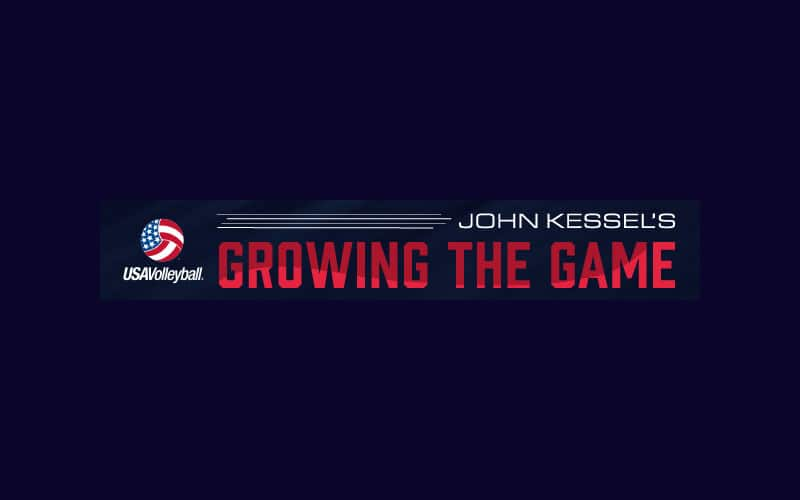
If you live in a place with thousands of players, this article might help you get better. If you live in a small market with just a few or maybe no players (yet), this is a competitive advantage to help you take on those teams that seem to have all the talent.

Words have little meaning to beginners in motor learning.

The term false or fake fundamentals, along with the concept of irrelevant training, is one that it seems coaches, parents and players simply want to ignore. Understandably so, as it gives them a feeling of success and mastery, even though it is not helping them in competition.
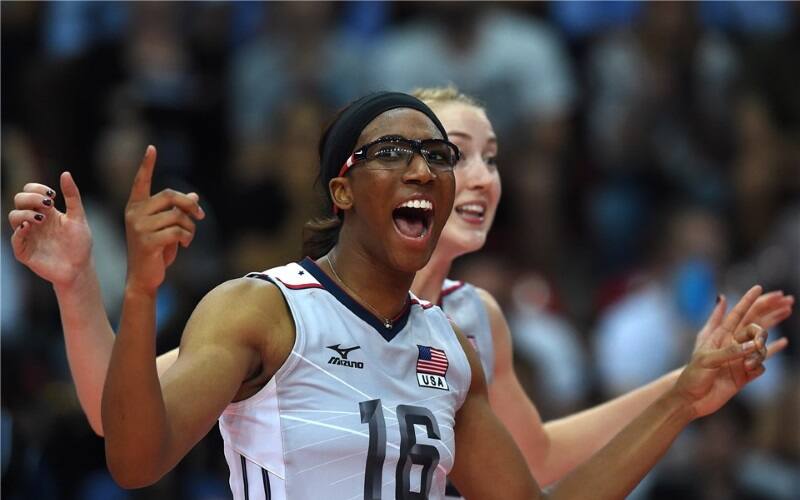
Women's National Team Foluke Akinradewo gave us her seven best tips on how to block the middle hitter.

Spent some time in June based out of Pago Pago, teaching the coaches and players one of the farthest “regions” that USA Volleyball supports, American Samoa. Since 1878 the US had a naval station there, and during World War II a 2,500 ft long run way, airbase and mobile hospital.

Sometimes as coaches, we need to stand back and see if we have taught them anything (the ducklings.) If you are simply quiet, and let them have a little independence, they’ll prove your worth as a coach.
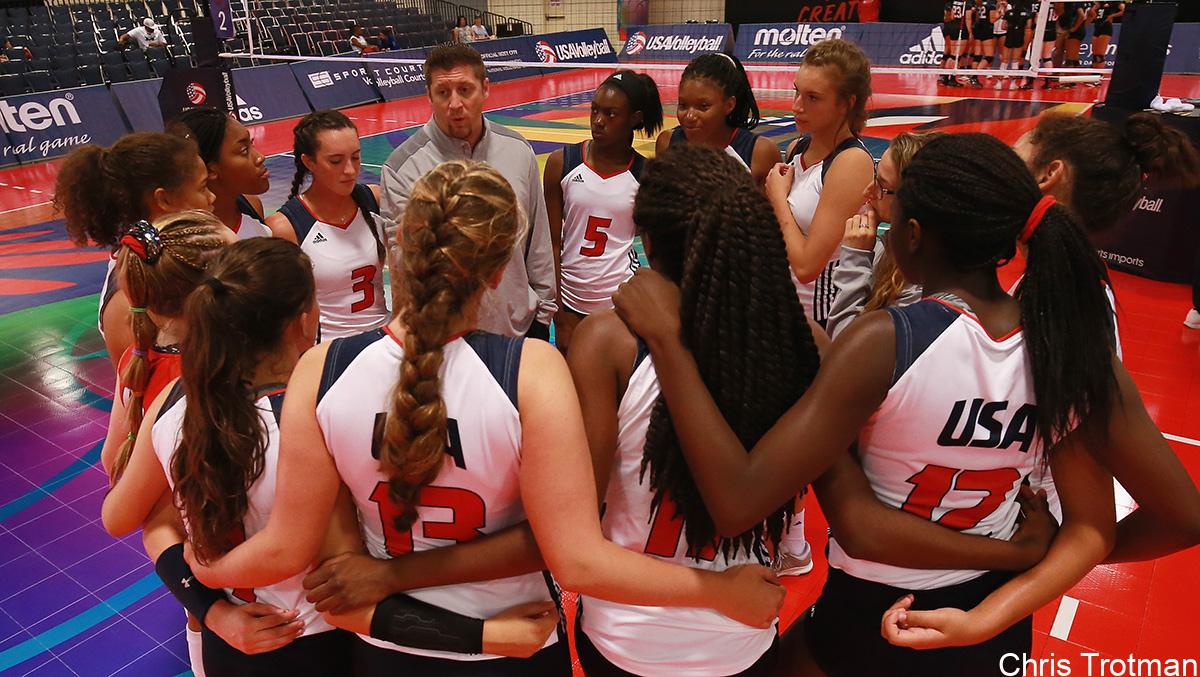
Many younger players might not know of the myriad ways to get even better at volleyball while also helping grow the game.
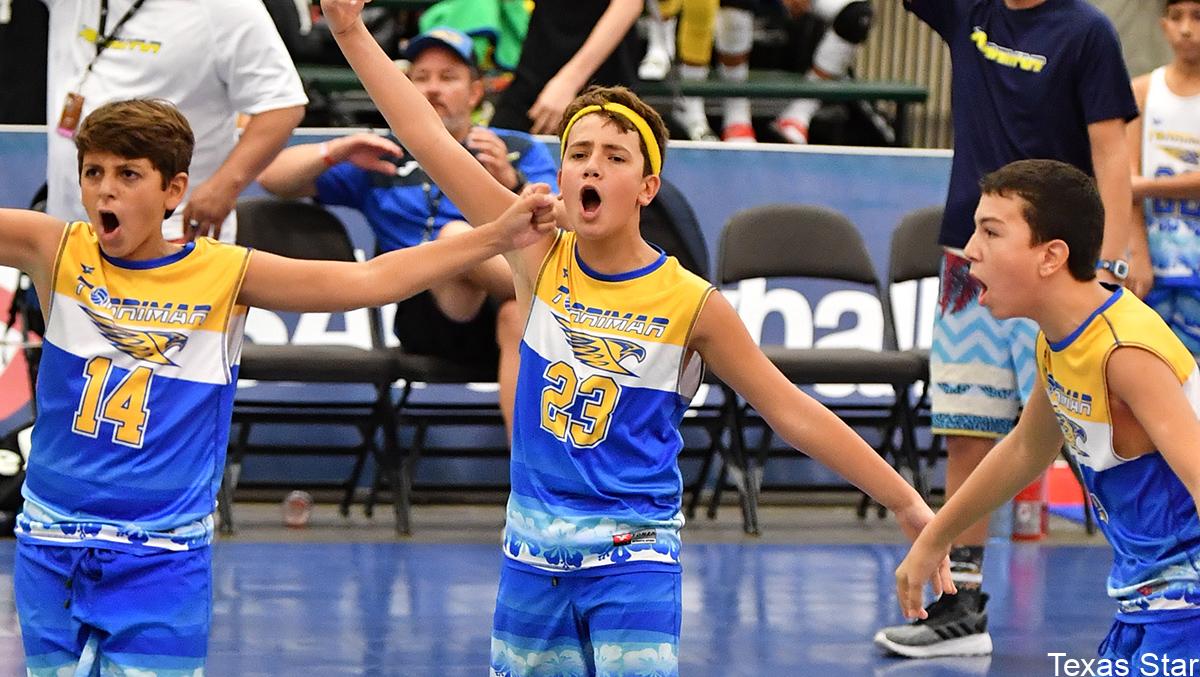
After nearly 40 years of spending time coaching 12U, I though it might be of value to share some of the best ways to grow the game, which should start at this 6-12 year-old age group level.

This year marks my 40th year of coaching youth volleyball, which I define as 12 and under. The last few years I have seen growth in this area, but far too much of it simply is adults coaching the adult 6 vs 6 game to little kids.

Watching some 80 year old players at the US Open and seeing their joy for a sport of a lifetime has me wondering why any kid in the last few decades stops playing.

This month some kid I know really well has his senior year athlete banquet. I was looking at the Princeton website, and at the top of the athletic department’s home page was a quote I had never heard that impacted me.
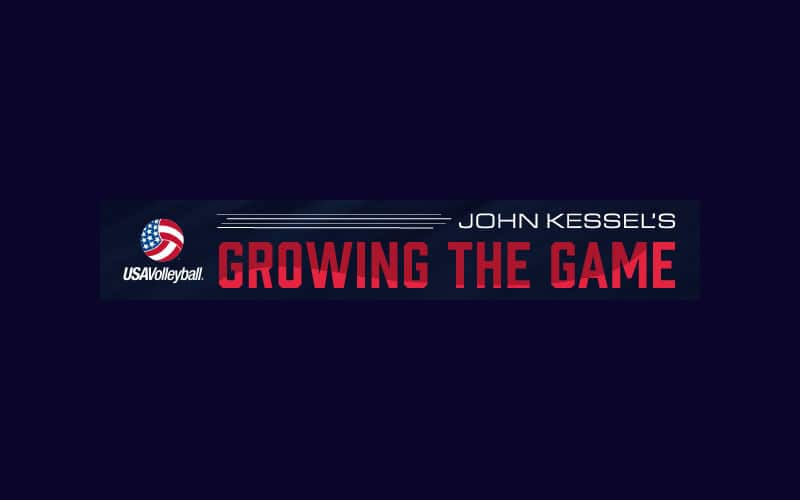
There are long time players who reminisce about the way volleyball used to be played in the days of sideout, not rally, scoring. I remember the competitions that started at 8 a.m. and went until 4 a.m. the next day, or speaking to parents about their child still playing in an event after midnight.
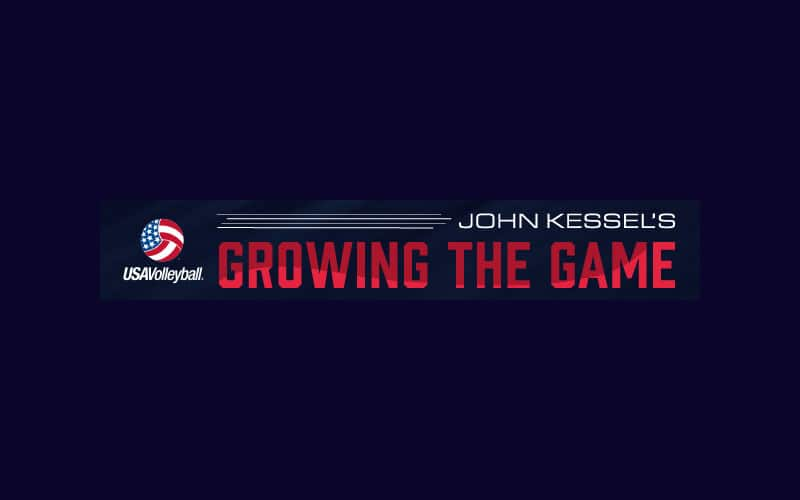
Sharing the science and my thoughts based on motor learning as to it relates to most machines
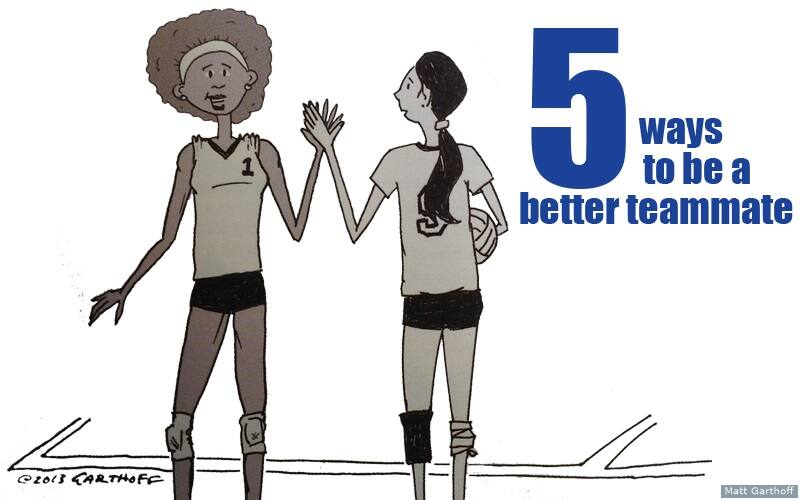
Professionals give tips on how you can be a better teammate